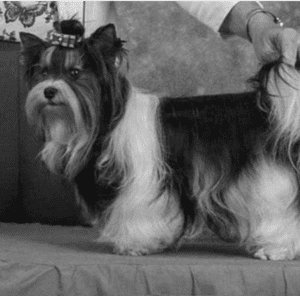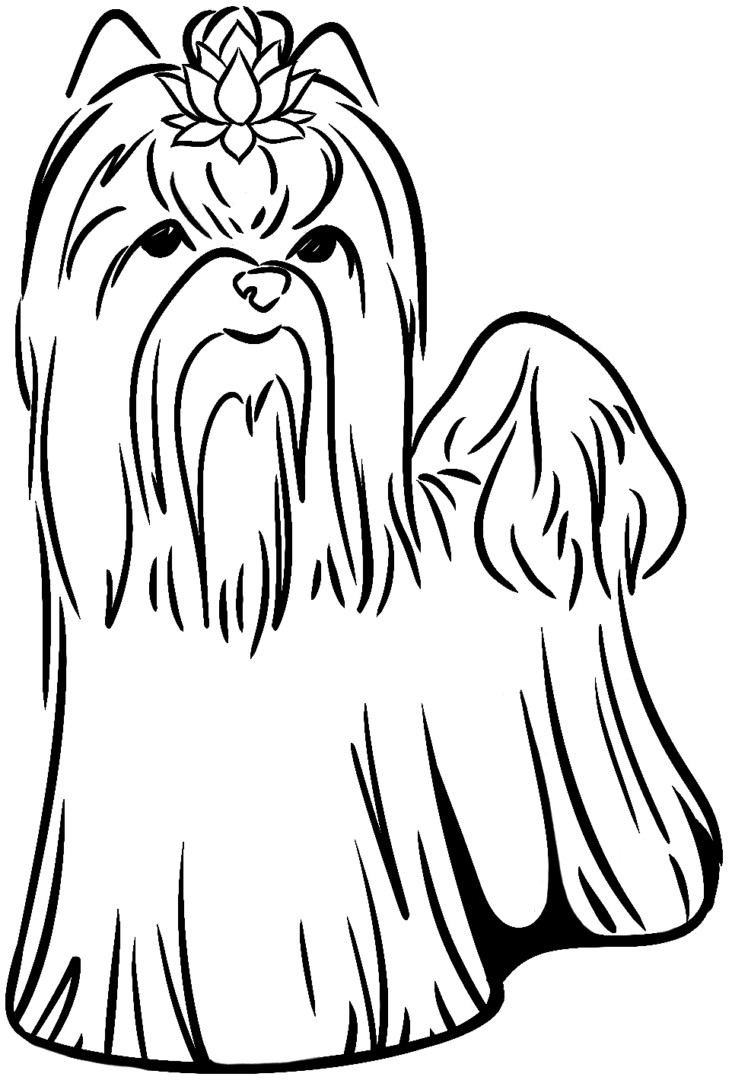History of the Biewer & Yorkshire Terrier

Teacup & Large Toy Biewer & Yorkshire Terriers Are Still Registered Through AKC as Biewer or Yorkshire Terriers
Biewer & Yorkshire Terriers must weigh between 4-8 pounds full grown and stand 7-11 inches tall to be qualified to enter the show ring. If a Biewer or Yorkshire Terriers is smaller or larger than this requirement it is considered a fault by the American Kennel Club. Which just means they can not enter the show ring for competition.
Teacup size Biewer & Yorkshire Terriers should weigh between 2 – or 5 pounds and stand 6-8 inches tall from shoulders to the floor. Large Toy sized Biewer & Yorkshire Terriers should weigh 9-11 lbs full grown and stand 12-13 inches tall. Evidently, they can not be “show dogs.” However, they can still enter other competitions such as agility, fly-ball and so on. Also, they can still have “champion bloodlines” in their pedigree if any of their past relatives met the requirements and completed the show competition with a championship title.
Keep in mind that teacup and large toy Biewer & Yorkshire Terriers are still simply a Biewer or Yorkshire Terriers. There is no separate classification for the large toy and teacup sizes as of yet. This means when you register a “teacup or large toy Biewer & Yorkshire Terriers” their registration papers will show as a purebred Biewer & Yorkshire Terriers. The word “teacup” and “large toy” is just a breeders term referring to their smaller or larger estimated adult size and should not be considered a separate classification.
The TeaCup Sized Biewer & Yorkshire Terrier
Personality: Friendly, smart, obedient
Energy Level: Medium Energy
Good with Children: Yes
Good with other Dogs: Yes
Shedding: Infrequent, Hypoallergenic
Grooming: Weekly Brushing
Trainability: Easy to Train
Height: 06-08 inches
Weight: 02-05 pounds
Life Expectancy: 12-15 years on average but can live to 18
Barking Level: Moderate
The Toy Sized Biewer & Yorkshire Terrier
Personality: Friendly, smart, obedient
Energy Level: Medium Energy
Good with Children: Yes
Good with other Dogs: Yes
Shedding: Infrequent, Hypoallergenic
Grooming: Weekly Brushing
Trainability: Easy to Train
Height: 07-11 inches
Weight: 04-08 pounds
Life Expectancy: 12-15 years on average but can live to 18
Barking Level: Moderate
The Large Toy Sized Biewer & Yorkshire Terrier
Personality: Friendly, smart, obedient
Energy Level: Medium Energy
Good with Children: Yes
Good with other Dogs: Yes
Shedding: Infrequent, Hypoallergenic
Grooming: Weekly Brushing
Trainability: Easy to Train
Height: 12-13 inches
Weight: 9-11 pounds
Life Expectancy: 12-15 years on average but can live to 18
Barking Level: Moderate
